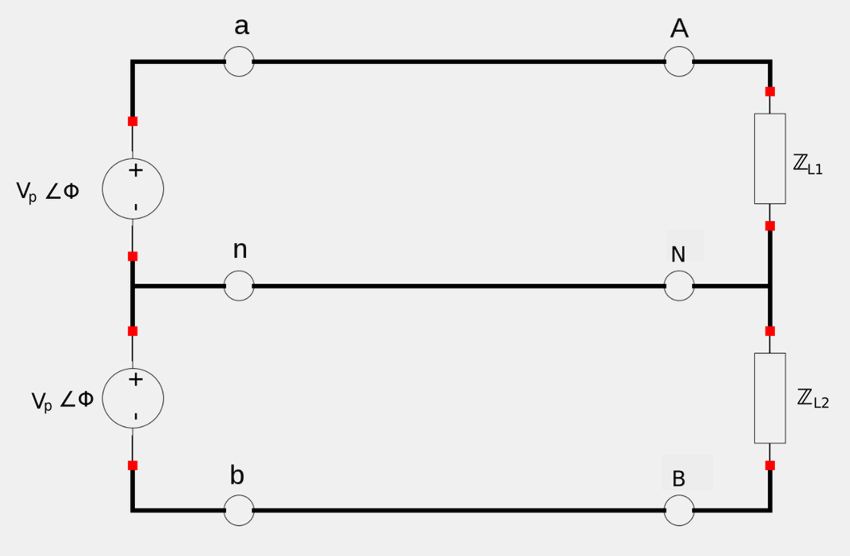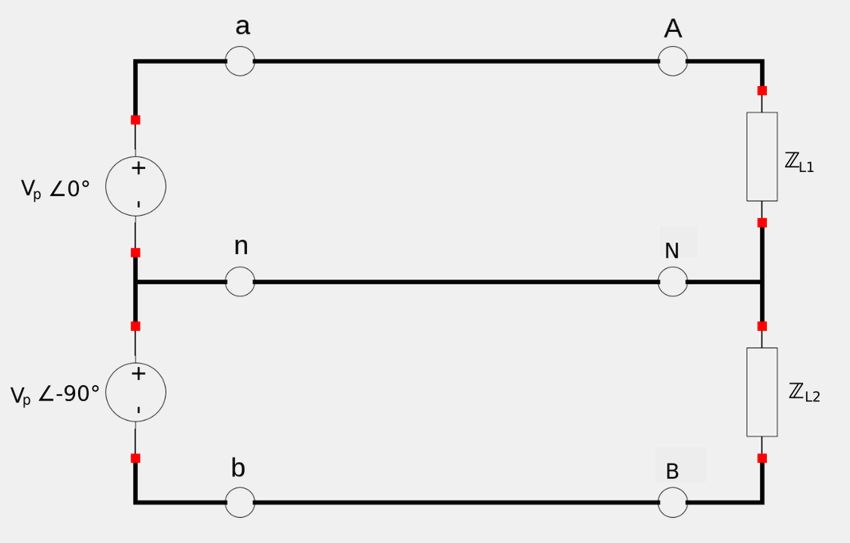Up to this point we have only discussed "single-phase" AC circuits. These are essentially a generator/source connected to a load through a pair of wires. The average person is more likely to encounter a single-phase 3-wire system such as what is found in most households and shown below:
Single-phase 3-wire system:

Such as system has two identical sources (same magnitude and phase) which are connected to two loads by two outer wires and a neutral wire. This configuration allows for the connection of loads that require both 120V and 240V.
Poly-phase Systems
In a poly-phase system, the AC sources operate at the same frequency but different phases. Below we see a 2-phase 3-wire system:
Two-phase three-wire system:

The phase voltages in the circuits above may be produced by a generator with two coils at right angles to each other. This causes the voltages produced by one of the coils to "lag" the other by 90 degrees.
Three-Phase Systems:
In a three-phase system, a generator contains three sources each having the same amplitude and frequency but out of phase with each other by 120 degrees. Such a system is the most commonly encountered poly-phase system due to being more economical. Three-phase systems are the method by which almost all electrical power is generated and distributed.
Advantages of a three-phase system:
- It can also be used to provide one or two phase outputs
- The three phases can be manipulated to produce more than three phases.
- The instantaneous power of a three-phase system can be constant (non-fluctuating)
- For the same amount of power, this system is more economical and requires less physical wire/cabling.
In the next section we will explore Balanced Three-phase Voltages
